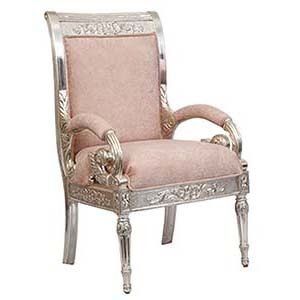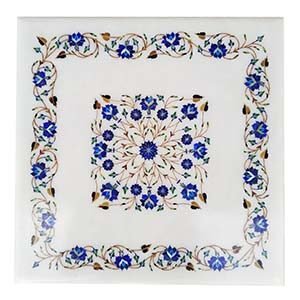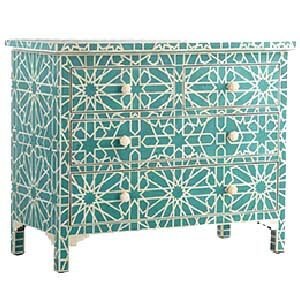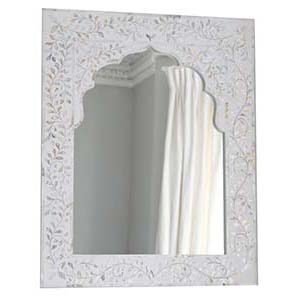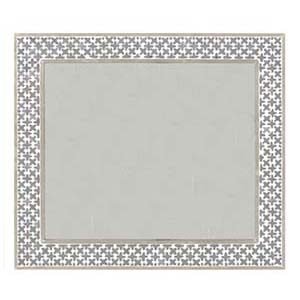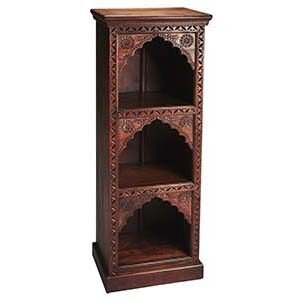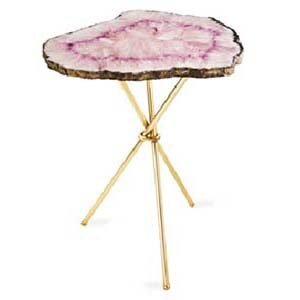About Udaipur
Udaipur- The City of Lakes & The Venice of the East
Udaipur, a.k.a., known as the City of Lakes and Venice of East, located in Rajasthan, is a major city and the administrative headquarters of the Udaipur district. Udaipur has been the historic capital of the kingdom of Mewar in the former Rajputana Agency. The city was founded by Maharana Udai Singh of the Sisodia clan of Rajput. He liked the city so much that he shifted his capital from the city of Chittorgarh to Udaipur. Till the year 1818, Udaipur remained as the capital city and after that it became a British princely state. After India’s independence in 1947, the Mewar province was joined to be a part of Rajasthan.
Udaipur is a very popular among people as a tourist destination. It is also a perfect place for destination weddings. Many celebrities, including film stars, business families, politicians have chosen Udaipur for their marriage ceremonies and parties. Udaipur is well known for its culture, tradition, history, scenic beauty and the Rajputana havelis and palaces, The the Travel & Leisure magazine, voted Udaipur as the best city in the world in 2009. It is perfect honeymoon destination with some of the world’s best heritage hotels.
Udaipur is also called as the “Most Romantic City of India” and the “Kashmir of Rajasthan”. It is one of the most romantic and the most beautiful cities of India. The city of Dawn is a lovely and peaceful land around the azure water lakes, surrounded by the lush hills of the Aravalis. Udaipur city is a fascinating blend of sights, sounds and experiences. It inspires many poets, painters and writers. Udaipur’s is a complete mixture of fairy-tale palaces, lakes, temples & gardens. It still carries all the flavors of its heroic past and brave kings. Their reflection in the calm and peaceful waters of the Lake Pichhola and Fateh Sagar is a very mesmerizing sight.
Udaipur has three interconnected lakes – the Fateh Sagar Lake, the Lake Pichhola and the Swaroop Sagar Lake. Udaipur city is easily accessible from all the major cities of India including Delhi, Mumbai, Ahmedabad and Jaipur.

Geography
Udaipur is located at 24.525049°N 73.677116°E. Approx. 37 sq. km. area is covered by Udaipur city. It is located at an altitude of 598.00 m or 1,962 ft above sea level.
It lies in the southern region of Rajasthan, quite near to the Gujarat border. The city lies 400 km southwest of the state capital, Jaipur and 250 km northeast from Ahmedabad.
Udaipur with its lakes lies on the south slope of the Aravali Hills Range in Rajasthan. The Northern part of the district consists of elevated plateaus, while the eastern part has vast stretches of fertile plains. The southern part is covered with rocks, Hills and dense Forest. There are two important passages in the Aravali ranges viz. Desuri Nal and Saoke which serves as a link between Udaipur and Jodhpur District.
The lakes of Udaipur are interconnected to form a lake system which supports and sustains the ground water recharge, water availability for drinking, agriculture, industries and is a source of employment through tourism. The Udaipur Lake System can be divided into the following categories:-
Upper lakes: Lake Badi, Chhota Madar & Bada Madar.
City Lakes: Lake Pichola, Fateh Sagar Lake, Swaroop Sagar, Rang Sagar, Kumharia Talab, Goverdhan Sagar.
Downstream Lake: Lake Udai Sagar.
River: River Ahar.
Climate & Temperature
Udaipur city ‘s climate is somewhat tropical. As it is located in the desert of Rajasthan, the climate and weather in Udaipur is generally hot. The summer season starts in the mid-March ends in the last week of June or first week of July. During the summer period, temperature hits a minimum of 23 °C to a maximum of 46 °C. Summers are followed by the Monsoons which arrive in the month of July. With lush greenery and placid lakes, the occasional rainfalls enhance the beauty of the city, making it one of the top monsoon destinations of India. The winter season starts from the October and ends in the month of March. Humidity, which generally occurs during monsoons, diminishes in the winter season. The city enjoys pleasant sunny days and cool nights with the temperature ranging from 5 °C to 30 °C. That is why Udaipur is more appealing to visit in the winter season.
The main tourist season is the winter season Tourist visit Udaipur in large numbers, between September to March or early April. Udaipur in January, being coldest month of the year, experiences bright and sunny days, with maximum temperature touching around 28.3 °C. However, Mornings, evenings and nights are very cold.
History
Udaipur was founded by Maharana Udai Singh II, in 1553, in Girwa Valley to the southwest of Nagda, on the Banas River. Udaipur was established as capital of the capital city of the Mewar kingdom. Ayad was the main trading area in Udaipur, which served as capital of Mewar from 10th century to 12th century. Whenever Chittaurgarh was threatened by enemy attacks the Chittaud rulers always moved to Girwa region. Maharana Udai Singh II, in the wake of 16th century emergence of artillery warfare, decided during his exile at Kumbhalgarh to move his capital to a more secure location. As Ayad was quite prone to floods, hence he chose the ridge east of the Pichhola Lake to start his new capital city. While hunting in the foothills of the Aravali range, he met a hermit. The hermit blessed him and guided him to build a palace on the spot. He assured him that it would be well protected. Udai Singh II established a residence on the site. In November 1567, the Mughal emperor Akbar attacked the fort of Chittor. Maharana Udai Singh built a six kilometer long city wall to protect Udaipur from External attacks, with seven gates, namely Surajpole, Chandpole, Udiapole, Hathipole, Ambapole, Brahmpole and so on. The area within these gates is still known as the old city.
As the Mughal rule weakened, the Sisodia rulers, reasserted their independence and recaptured most of Mewar except for Chittor. Udaipur remained the capital of the state, which became a princely state of British India in 1818. Being a hilly region and unsuitable for heavily armoured Mughal horses, Udaipur remained safe from Mughal influence despite much pressure. At present, Arvind Singh Mewar is the 76th custodian of the Mewar dynasty.
Economy
Udaipur has a vast economic base. The major contributions to its economy comes from agriculture, marble mining, mineral industries and tourism. The handicraft industry and small cottage industry sectors play an important role in contributing to Udaipur city’s economy. Under the new smart city mission started by the government of India, Udaipur has been selected in the first round in the list of 20 cities that will be soon developed as smart cities.
Handicrafts
Udaipur is well known for handicrafts such as carving furniture, inlay work, marble crafts, Bone and Mother of Pearl work, paintings, stone handicrafts, silver furniture, white metal furniture, brass furniture, wooden furniture, terracotta and many other hand crafted products. Shilpgram is a place in Udaipur, where a cultural event is organised every year in the last week of December. People from all over the country exhibit all kinds of handicraft and hand-loom products in this event. Many other Craft bazaars are organized by Shilpgram, to encourage the regional arts and crafts, culture, handicrafts and hand-loom works.
Tourism
Udaipur, is a major destination for both domestic and foreign nationals tourists, with its picturesque landscape, lakes, and historic palaces and architecture. With large number of hotels for serving the tourists, Udaipur has some of the world’s most renowned and the country’s best luxury hotels and resorts. The Oberoi Udaivilas has been ranked as the world’s number 1 hotel in 2015. The Leela palace Udaipur and the Taj Lake Palace of Udaipur, are some of the most expensive hotels in the country. Many other renowned hotels present in the city are the major cause for tourism. And due to that tourism sector has been a large contributor to the economic growth and fame of Udaipur.
Metals and Minerals industries
Udaipur district is rich in mineral resources as a large variety of important minerals are found here. The major driving resources behind the industries which are based in the Udaipur is Marble, Copper, lead, zinc and silver, industrial minerals like phosphate, asbestos, calcite, lime-stone, Talc (soap stone), barites, wollastonite. Marble is exclusively mined, processed and exported from here to all over the world. World’s biggest marble mines and markets are located here. The marble industry is very well set and established with proper infrastructure and machines to support mining and processing. Marble sector is the major source of employment for the people of the city and for the immigrants from nearby vilages. Udaipur has also got the world’s second largest Zinc producer, Hindustan Zinc.
Agriculture
As the major employment sector of India is agriculture, so is the same for Udaipur. It is a leading sector in terms of employment and economy. The Major crops of the area are Jowar and Maize in Kharif season and Wheat and Mustard in the Rabi season. Pulses, Groundnut and vegetables like brinjals, cucumber, loki, taaroi are some of the major food products grown in the city. The Maharana Pratap University of Agriculture and Technology, along with its affiliated institutions, has been working towards identifying, designing, preparing and adapting new techniques in the field of agricultural technology for its development since its establishment.
Retail
Udaipur has both traditional as well as modern retail shopping makets. The traditional markets are Bapu Bazaar, Suraj Pole, Chetak Circle, Bada Bazaar, Nehru Bazaar and Chand Pole, while the other areas like Sukhadia Circle, Durga Nursery Road, Shakti Nagar are good for new startups. A new mall culture is also developing in Udaipur. Some of the famous malls are Celebration Mall, Lakecity Mall and R.Kay Mall. Some malls which are under construction right now are Mangalam Square Mall, Arvana Shopping Mall, Chetak Shopping Mall, City Centre Mall etc.
Places to visit in Udaipur
There are many tourists spots in Udaipur. Some are famous for food, some for strolling, some for shopping and some for cultural activities and some for their historic art.
Some of the famous places to visit in Udaipur are :-
Dudh Talai
Dudh Talai is a favorite tourist spot in Udaipur. It is also a famous picnic spot. It is a garden located near to the Lake Pichola, spread over a hilly area. There are slides and swings for children. Dudh Talai Lake provides few options for fast food centers, camel and horse rides and boat ride. There is a ropeway from top of Deen Dayal Upadhyaya Park, which takes tourists to the Karni Mata temple. This ride is at a height of around 500 meters, and runs over a fixed grip mono cable. It is the first ropeway of Rajasthan. It is a 4 minute ride, which gives a beautiful view of the city including Lake Pichola, magnificent City Palace, Sajjangarh Fort and many more, from its cabin.

City Palace, Udaipur
City Palace is situated on the eastern bank of Lake Pichola. It has a massive series of palaces which were built at different times from 1559. The Tripolia, built in 1725, is a triple-arched gate which serves as the main entrance gate for the City Palace. This gate leads to a series of courtyards, overlapping parations, terraces, corridors and gardens. The palace has now got a museum in which the weapons used by the warriors of the Maharaja Udai Singh’s Army have been displayed. Many antique articles, paintings, decorative furniture and utensils from the royal era have also been kept for public display. The palace is also famous for its crystal gallery, in which lot of beautiful handcrafted glass work can be seen. Palace has also got 2 hotels, one is Shiv Niwas Palace and the second one is Fateh Prakash, which are managed my the current Maharaja of Udaipur, Maharaja Arvind Singh Mewar, under the name of chain of hotels, HRH group of Hotels.

The Lake Palace
The Lake Palace is situated on an island in Lake Pichola. It was constructed to serve as a royal summer palace. It is made completely of white marble. It was maharaja’s propery but now it is being managed by Taj Hotels Resorts and Palaces. It has been converted into a luxury 5 Star hotel. The Taj Lake Palace falls in the category of most costliest hotels in the world, with room tariff ranging from USD$ 1200 to a whopping USD$ 13000 per night, during its peak tourist season.

Jag Mandir
Jag Mandir is a palace built on an island in the Lake Pichola. It is also known as the “Lake Garden Palace”, which was constructed by three Maharanas of the Mewar kingdom. It took 100 years to make the palace. In 1551, its construction work was started and was it got completed in 1652. The royal family used the palace as a summer resort and pleasure palace. It is now converted into a 5 star hotel. Many people visit this palace to experience the royal ambiance. It is famous for romantic candle light dinners. Many of the celebrities and politicians have organised their or their children’s wedding in this palace. People visiting it get a very unique experience as it is situated in the middle of the lake. It shines like a star in the lake at night, which make the ambiance mesmerizing.

Monsoon Palace
Monsoon Palace, also known as Sajjan Garh Palace, was built as an astronomical centre to keep track of the movement of monsoon clouds in the area. It also served as the summer resort of the Maharanas. It has been built with white marble and is located on Bansdara peak of the Aravalli hill range at an elevation of 944 m (3100 ft) above mean sea level. The palace offers a panoramic view of the city’s lakes, palaces and surrounding countryside. It also a has a wildlife sanctuary park and a zoo for tourists.

The Jagdish Temple
The Jagdish Temple is a large Hindu temple in the middle of Udaipur, built by Maharana Jagat Singh I in 1651. It is a key tourist place in the city, this temple is an example of Māru-Gurjara Architecture. It is a Lord Krishna Temple. During Janamastami festival, may cultural events occur here.
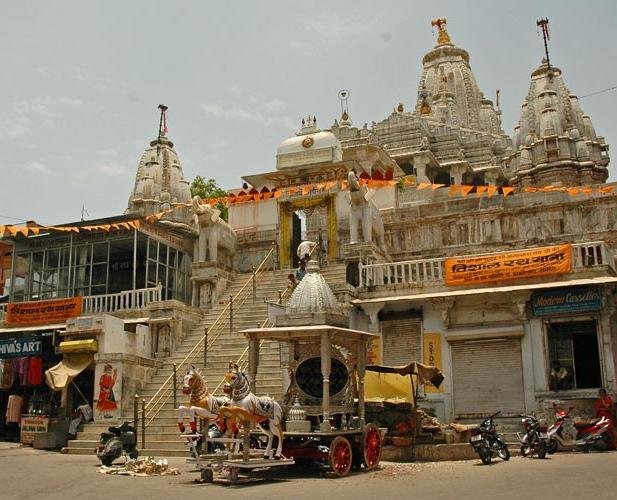
The Fatehsagar Lake
Lake Fatehsagar is an artificial man made lake situated in the north-west part of Udaipur. This lake was originally built by Maharana Jai Singh in 1678 and later reconstructed and extended by Maharana Fateh Singh. It is one of the most popular destinations in the city for tourists and the city residents. At fatesagar lake, there are many small stalls for foodies.
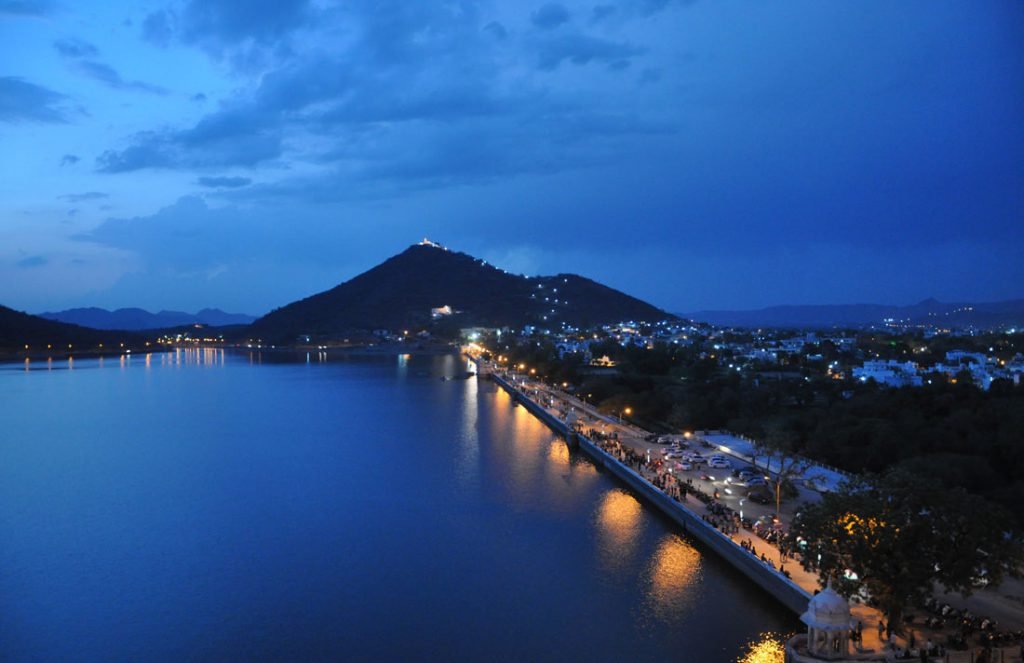
Sukhadia Circle
Sukhadia Circle (square) is large roundabout in the city’s northern suburb and is a popular recreational centre. The square has a park and in its centre, a small pond which lies a 21 ft high three-tiered fountain. The fountain is made of marble is surmounted by a wheat-ear motif, a symbol of prosperity. It is a famous place for boating. Yoga, Laughter club and many events are organised here.
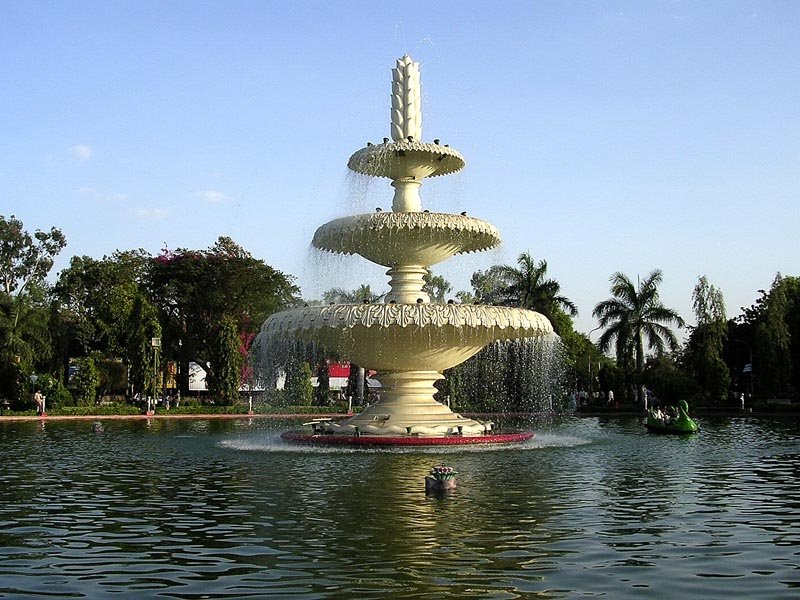
Sahelion ki Bari
Sahelion ki Bari is a big garden and a popular tourist space in the city. The garden with its fountains and kiosks, a lotus pool and marble elephants, was laid for a group of forty-eight young women attendants who accompanied a princess to Udaipur as part of her dowry. That is why its name was given as sahelion ki bari meaning friends park. It is famous for its white marble baradari, gazebos and fountains. Its contruction work started in 1710 and ended in 1734.

Lake Pichola
Lake Pichola is an artificial fresh water lake and is one of the several contiguous lakes in the city of Udaipur built in 1362. The lake’s surroundings and the several islands within the lake have been developed over the centuries, with palaces, marble temples, family mansions, bathing ghats, Restaurant, Hotels, Parks and chabutaras.

Neemach Mata Ji Temple
Neemach mata temple is located on top of a hill near fateh sagar lake. The temple is 900 meters above on the top of the hill. One can see a beautiful view of Udaipur from the temple. Many early morning walkers climb the mountain every day to visit this temple.
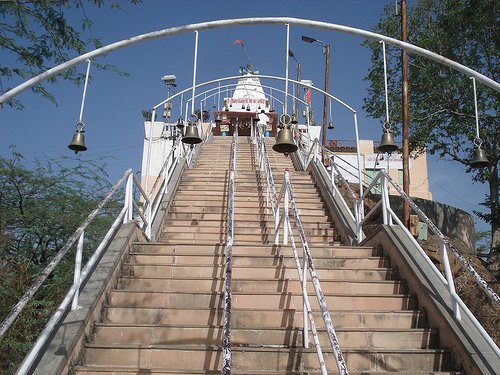
Moti Magri
Moti Magri or Pearl Hill, is a big park, in which memorial of the Rajput hero Maharana Pratap. It is basically a small hilloc, on top of which there is a bronze statue of the Maharana riding his favourite horse “Chetak”. It was initiated by Maharana Bhagwat Singh Mewar, and carried over and completed with the help of a public trust. Moti Magri is open for tourist and is a favorite picnic spot for Udaipur people.
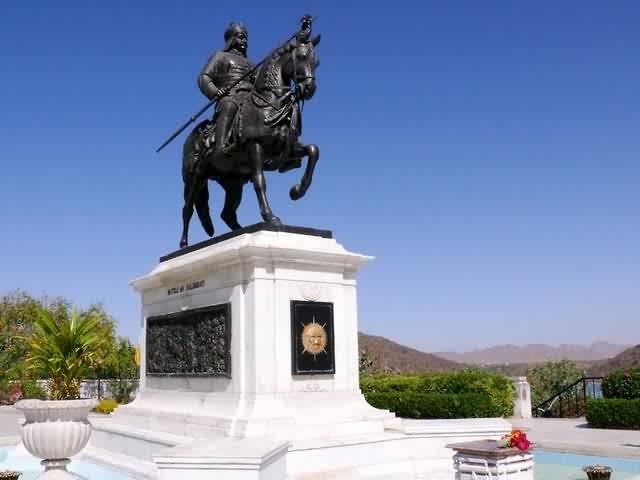
Gangaur Ghat
Ganguar ghat is a place situated near to the Lake Palace on the bank of Lake Pichola. It is a famous tourist place, where people sit on steps near the lake to get a nice view of the Lake Palace and Jag Mandir Palace. The famous Ganguar festival of Mewar is celebrated at this place every year.
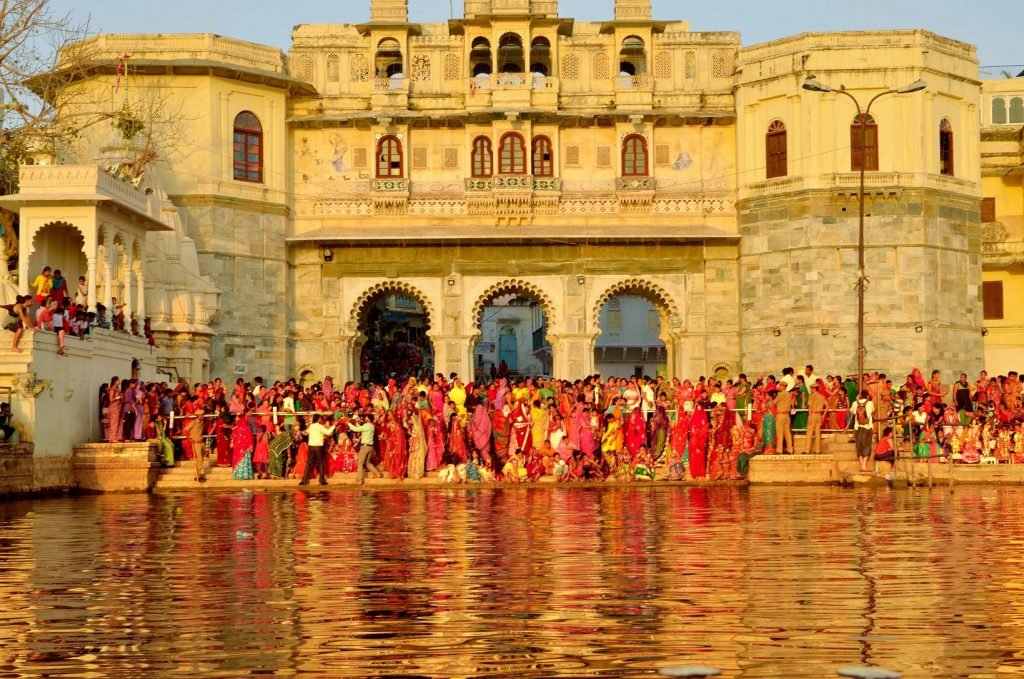
Places Nearby Udaipur
There are many tourists spots in Udaipur. Some are famous for food, some for strolling, some for shopping and some for cultural activities and some for their historic art.
Some of the famous places to visit in Udaipur are :-
Shrinath Ji Temple, Nathdawra
Nathdwara is around 50 kms away from Udaipur. Nathdwara’s Shrinath Ji temple is very famous not only among common people or domestic and international tourists but also it is very famous among many big celebrities and politicians. As per the religious beliefs, the shrine at Nathdwara was built in the 17th century at the spot as exactly indicated by Shrinathji himself. Lord Krishna’s idol was being transferred to a safer place from Vrindaban to protect it from the anti-Hindu, iconoclastic and barbarian destruction of the Mughal ruler Aurangzeb. When the idol reached the spot at village Sihad or Sinhad, the wheels of bullock cart in which the idol was being transported sank axle-deep in mud and could not be moved any farther. The accompanying priests realised that the particular place was the Lord’s chosen spot and accordingly, a temple was built there under the rule and protection of the then Maharana Raj Singh of Mewar. Shrinathji Temple is also known as ‘Haveli of Shrinathji’ (mansion).
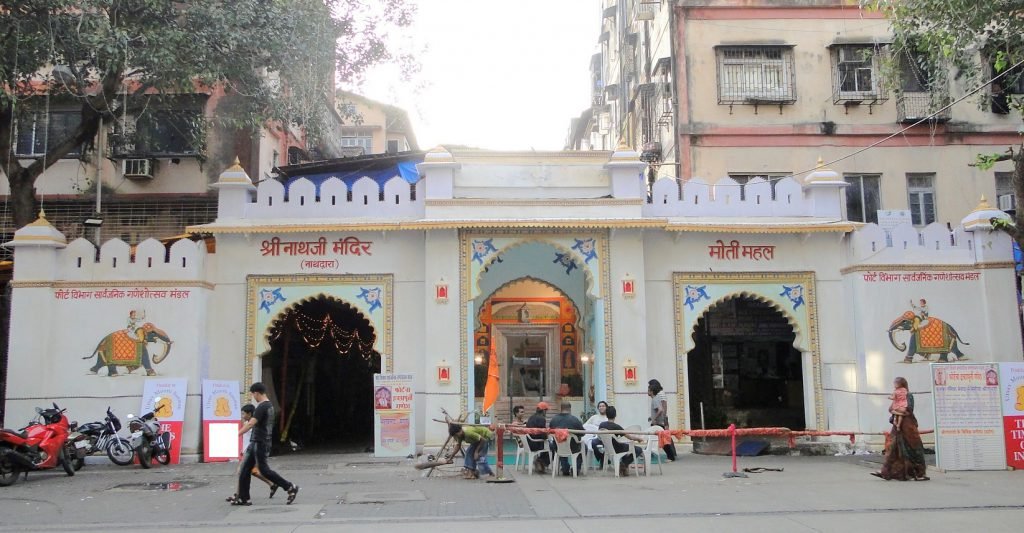
Kankroli
Kankroli a.k.a. Rajsamand is a city located in the district of Rajsamand in Rajasthan, India. It is located about 68 kms north of Udaipur and forms a twin city with Rajsamand. Rajsamand is famous for Rajsamand lake built by Maharaja Rajsingh. Along the rajsamand lake there is the beautiful temple Dwarikadheesh Temple devoted to Lord Krishna. Kankroli is the main city in Rajsamand, and lies on NH-8 Udaipur-Ajmer road. Kankroli is famous for the JK Tyre plant, which is one of the leading Tyre Manufacturers in India. A whole village is named after it known as JayKay Gram.

Kumbhalgarh Wildlife Sanctuary
Kumbhalgarh Wildlife Sanctuary is in the Rajsamand District of Rajasthan state in western India and surrounds the Kumbhalgarh fortress and covers an area of 578 km2. The sanctuary extends across the Aravali Range, covering parts of Rajsamand, Udaipur, and Pali districts, ranging from 500 to 1,300 metres elevation.
It takes name after the impressive historic fort of Kumbhalgarh, which come into view over the Park. It is home to a very large variety of wild life, some of which are highly endangered species. The wild life includes wolf, leopards, sloth bear, hyena, jackal, jungle cat, sambhar, nilgai, chausingha, chinkara and hare. The bird life at Kumbhalgarh is also gratifying. The normally shy and untrusting grey jungle fowl can be spotted here. Peacocks and Doves can be sighted regularly feeding on grains scattered by the jungle guards. Bird like the red spur owls, Parakeets, golden Oriole, grey Pigeons, Bulbul, Dove and white breasted kingfisher can also be seen near the water holes. Kumbhalgarh’s natural beauty is attracting many tourists and especially for its accessibility from Udaipur, which is 100 km from here. Foot tracking and horse safari organised by local tour operators are proving to be very popular.
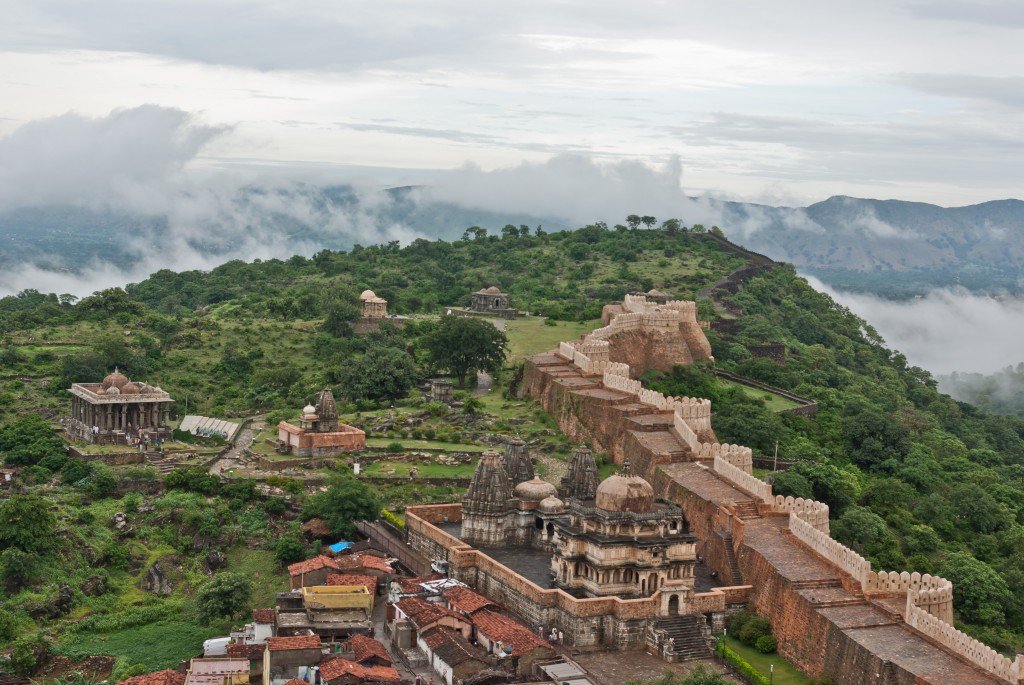
Eklingji
Eklingji is a Hindu temple complex in Udaipur District of Rajasthan in western India. Eklingji is believed to be the ruling deity of Mewar Princely State and the Ruler Maharana rules as his Dewan. It is located 22 km north of Udaipur,
Begun in 971, the temple complex was built by the Guhila (later called Sesodia) dynasty of Mewar, in honor of their presiding deity Eklingji, a form of Lord Shiva. The beautifully sculpted temple complex includes 108 temples within its high walls. The main temple, which dates to the 15th century, was rebuilt from the ruins of an earlier destroyed temple. The walled complex is made of marble and granite and has an enormous double-storied, elaborately pillared hall or “mandap” under a vast pyramidal roof, with a four-faced image of Lord Shiva in black marble. Another temple in the complex is the Lakulish Temple; built in 971, it is the only temple of the Lakulish sect in the whole of India. The Eklingji temple is surrounded by long walls of hard rock. This fascinating temple was built in 734 A.D. It consists of 108 temples chiseled out of sandstone and marble.
About 1 km from Eklingji, Nagda town is famous for its Sahasra Bahu Temples and Adbudji temples. The Sas-Bahu Temple is widely known for its exquisite stone carvings, which are related to incidents in the great Indian epic Ramayana.
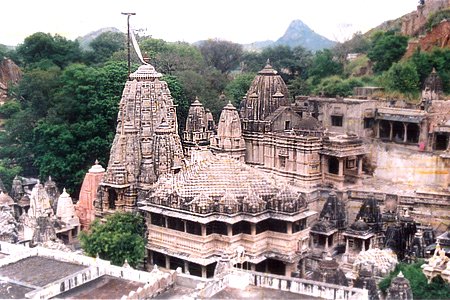
Kumbhalgarh
Kumbhalgarh Fort is a Mewar fortress on the westerly range of Aravali Hills, in the Rajsamand District of Rajasthan state in western India. It is a World Heritage Site included in Hill Forts of Rajasthan. Built during the course of the 15th century by Rana Kumbha and enlarged through the 19th century, Kumbhalgarh is also the birthplace of Maharana Pratap, the great king and warrior of Mewar. Occupied until the late 19th century, the fort is now open to the public and is spectacularly lit for a few minutes each evening. Kumbalgarh is situated 82 km northwest of Udaipur by road. It is the most important fort in Mewar after Chittaurgarh.
In 2013, at the 37th session of the World Heritage Committee held in Phnom Penh, Cambodia, Kumbhalgarh Fort, along with five other forts of Rajasthan, was declared a UNESCO World Heritage Site under the group Hill Forts of Rajasthan.
With over 38 km lone wall, the fort is the second largest wall in the world after the Great Wall of China and the second largest fort in Rajasthan after Chittorgarh Fort.
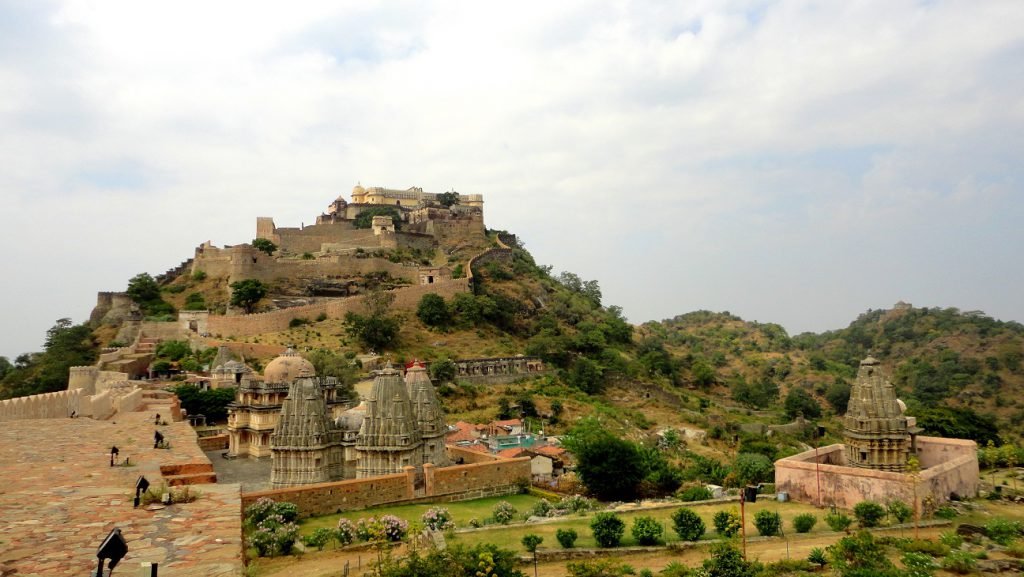
Chittorgarh
Chittorgarh is a city in Rajasthan state of western India. It lies on the Berach River, a tributary of the Banas, and is the administrative headquarters of Chittorgarh District and a former capital of the Sisodia Dynasty of Mewar. The city of Chittaurgarh is located on the banks of river Gambhiri and Berach. The district was bifurcated and a new district namely Pratap Garh was created with certain portion taken from Udaipur district.
Fiercely independent, the fort of Chittor was under siege thrice and each time they fought bravely, thrice Jauhar was committed by the ladies and children, first led by Rani Padmini, and later by Rani Karnavati. The famous warriors Gora and Badal, in the war against Allaudin Khalji (1303 AD), have become legendary. The sacrifice of Rao Jaimal and Patta, two brave army chieftains of Mewar, in the war against the Mughals (1568 AD) was so great that the Mughal Emperor Akbar installed their statues in the fort of Agra. It has also been a land of worship for Meera. Chittorgarh is home to the Chittorgarh Fort, the largest fort in India and Asia.

Jain Temple, Ranakpur
The renowned Jain temple at Ranakpur is dedicated to Tirthankara Adinatha. Local legend has it that Dharma Shah, a local Jain businessperson, started construction of the temple in the 15th century following a divine vision. The temple honors Adinath, the first Tirthankar and founder of the Jain religion. The town of Ranakpur and the temple are named after the provincial ruler monarch, Rana Kumbha who supported the construction of the temple.
Light colored marble has been used for the construction of this grand temple which occupies an area of approximately 60 x 62 meters. The temple, with its distinctive domes, shikhara, turrets and cupolas rises majestically from the slope of a hill. Over 1444 marble pillars, carved in exquisite detail, support the temple. The pillars are all differently carved and no two pillars are the same. It is also said that it is impossible to count the pillars. Also all the statues face one or the other statue. There is one beautiful carving made out of a single marble rock where there 108 heads of snakes and numerous tails. One cannot find the end of the tails. The image faces all four cardinal directions. In the axis of the main entrance, on the western side, is the largest image. The temple is designed as chaumukha—with four faces. The construction of the temple and quadrupled image symbolize the Tirthankara’s conquest of the four cardinal directions and hence the cosmos.
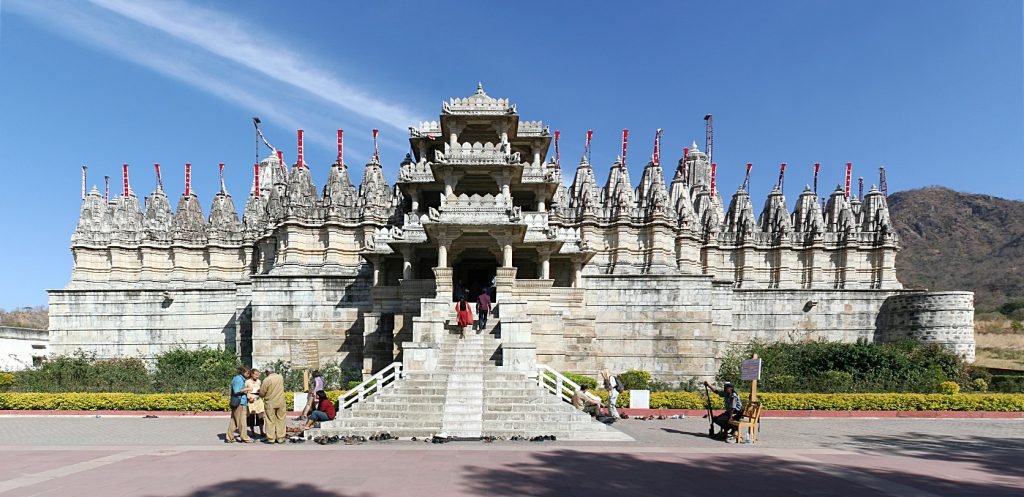
Rajsamand Lake
Rajsamand Lake is a lake near the town of Rajsamand in the Indian state of Rajasthan. Built in the 17th century, it is approximately 2.82 km wide, 6.4 km long and 60 feet deep. It was built across the Gomati, Kelwa, and Tali rivers, with a catchment area of approximately 510 km2. Rajsamand Lake is one of the five popular lakes of Mewar. Located 66 km in the north of Udaipur, Rajsamand Lake lies between the cities of Rajnagar and Kankroli. It is also known by the name of Rajsamudra Lake in Rajasthan. Rajsamand Lake was built by Maharana Raj Singh in 1660.
The river Gomti is the main supplier of water to Rajsamand Lake. This was created by building an impressive dam in the 17th century. On the southern end of the lake, the huge embankment is composed of white marble. It has marble terraces and stone steps that touch the waters of the lake. There are five toranas (weighing arches) where Maharana Raj Singh and his descendants organized the annual event of Tuladan. (Kings used to weigh themselves in gold and then distribute it amongst the Brahmans.)
Rajsamand Lake was made the seaplane base of Imperial Airways during World War II, for over six years.
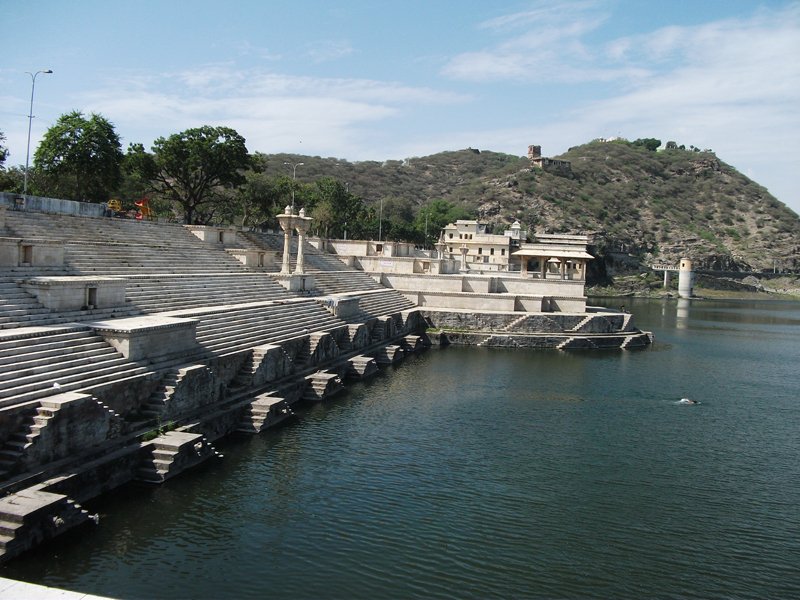
Rishabhadeo
Rishabhadeo is situated 65 kilometres from Udaipur and is on Udaipur-Ahmedabad Road. The name of the town is also Dhulev, however it is better known as Rishabhadeo. It is a well-known pilgrim site. The main attraction is the temple of Rishabhadeva, the first Jain tirthankara. Local Bhils also worship the deity. Lord Rishabhadeo is also “Kesariyaji” because a large offering of saffron is made to the deity. This temple was considered to be one of the four main religious institutions of Mewar, ruled by the Sisodia Maharanas of Udaipur.
It has been a famous Jain pilgrimage center. The famous Arati by Mulchand refers to this temple:
“Dusari Aarti Din Dayala,
Dhuleva Nagarman Jug Ujavala”
The history of Kesariyaji Temple is not ever known clearly. Different different communities puts their own ideas for the temple. Therefore, temple’s history is controversial. Temple is believed to have beautiful architecture before 15th century. The temple is believed to have been built in the ninth century by Digambara Jains. A 1376 inscription on the temple wall mentions that Punja and Kota, sons of Shah Harda had the structure built as a result of the preachings of Bhattaraka Dharmakirti of Kashtha Sangh. That is when the garbhagriha and the khela mandap was constructed.
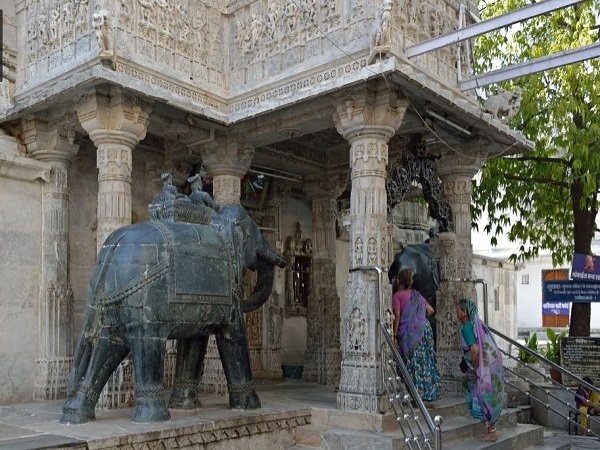
Jaisamand Lake
Jaisamand Lake is Asia’s second-largest artificial lake. It has an area of 87 km2 when full, and was created in the 17th century when Rana Jai Singh of Udaipur built a marble dam across the Gomati River. It is 45 km from District headquarters of Udaipur. When first built, it was the largest artificial lake in the world. The surrounding Jaisamand Wildlife Sanctuary around Dhebar Lake can be reached by the state highway to Banswara from Udaipur. It is 27 km from Parsad. The Jaisamand Wildlife Sanctuary protects 162 km², mostly teak forest, on the shores of Dhebar Lake. The lake has a total number of 3 islands measuring from 10 to 40 acres each. The Dhebar Lake Marble Dam is 300 Meters long and is a part of the “Heritage Monuments of India”. The dam also has the Hawa Mahal Palace, winter Capital of the erstwhile Maharanas of Mewar.

Udaisagar Lake
Udaisagar Lake, one of the five prominent lakes of Udaipur, is situated around 13 km in the east of Udaipur. This lake was built by Maharana Udai Singh in 1565. Udai Sagar Lake is around 4 km in length, 2.5 km in width and 9 meters deep at the maximum.
In 1559, Maharana Udai Singh constructed a dam on Berach River to ensure adequate supply of water in his kingdom. Udai Sagar Lake was developed as an outcome of this dam. This dam at Udaisagar Lake drains about 479 km2, and covers an area of 10.5 km2.

Charbhuja
Charbhuja is a famous temple of the lord Vishnu in the Garhbor village in the Kumbhalgarh tehsil of Rajsamand district in the state of Rajasthan, India.
The temple was built in 1444AD. According to the inscription inside the temple, village name was Badri, therefore, the idol is considered as BadriNath. The deity of Charbhuja Nath is considered to be miraculous. The idol of Shri Charbhuja Ji is 85 centimeters high. The four arms of the idol hold conch, discus, mace and a lotus flowers. The discus and the mace symbolize dynamic power, energy and prowess.
The temple is made by mirrors, Lime mortars and Marble. The excellent work of the mirror is done in the original temple. The shutters of the inner temple are made of gold while outer shutters are made of silver. Garud ji is installed in the other courtyard. Stone elephants are placed on the both sides of the entrance. The temple is visited by thousands of pilgrims.
According to a legend, The king Shri Gang Dev got divine instruction in his dream to install the idol to be recovered from water. Then he installed this idol in his garh. It is said the Pandavas also worshiped this idol before proceeding for their last YATRA to Himalaya. To protect this temple about 125 battles have taken place. Many times idol also was submerged in the water for its safety.
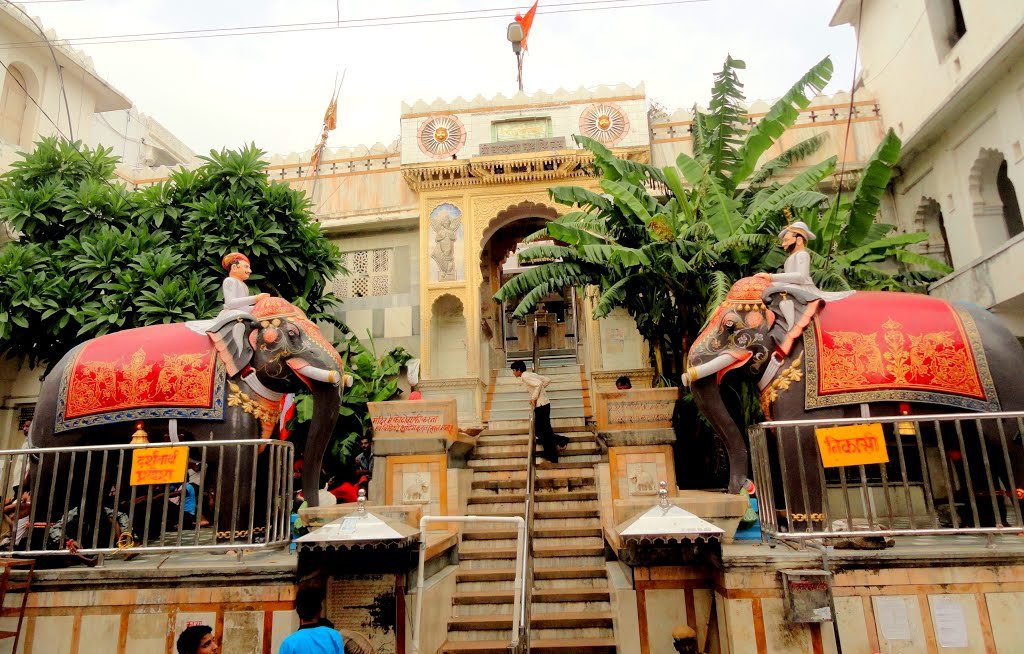
Sanwaliya Ji Temple
The Sanwaliya Ji temple of the Dark Krishna is situated on the Chittorgarh – Udaipur Highway, at the town of Mandaphia, about 100 kilometers from Udaipur. The deity also known as Shri Sanwariya Seth. The historic city of valor and devotion – Mandaphiya is now known as Shri Sanwaliya Dham and is second to Shri Nathadwara to the followers of the Vaishnav Sect. People believe that all their desires are fulfilled when they visit Shri Sanwaliya Seth’s Darbar.
The legends has it that in the year 1840, a milkman named Bholaram Gurjar dreamt of three divine statues buried under the ground in the Chapar village of Bhadsoda-Bagund. When the villagers started digging the place, they found the three statues, exactly as Bholaram saw in his dream. They were the statues of LORD KRISHNA-all of them beautiful and mesmerizing. One of the statues was taken to Mandaphiya, one to Bhadsoda and the third remain at the very place where it was found. All three locations became temples. Later on, the three temples of Sanwaliya Ji became renowned and devotees visit them in large numbers every day.

Sita Mata Wildlife Sanctuary
The Sita Mata Wildlife Sanctuary is a wildlife sanctuary situated in the southeast portion of the Pratapgarh district in Rajasthan, India, declared as a protected forest area by the Government of Rajasthan. It is a dense forest, with an area of 422.95 square kilometers, which is about 40% of the total land area of the district. The land is undulating because of the confluence of three different formations — Malwa Plateau, the Vindhyachal Hills and Aravali mountain ranges.
Sitamata is one of the richest sanctuaries from the biota point of view. Nearly 50 species of mammals, more than 325 species of birds 40 species of reptiles, 9 species of amphibians, 30 species of fishes and more than 800 species of plants have been listed in the Sanctuary .This Sanctuary can be considered as “hot spot” of Rajasthan for floral and faunal diversity point of view Northern moist distribution limit of many duccan elements are passing through the Sitamata. Flying Squirrels, Four horned antelope, Tree snakes, Tree Frog, Ratal, Indian pangolin ,etc. can be seen here. This Sanctuary is famous for Four horned Antelopes and considered as best Chousinga Sanctuary of state.
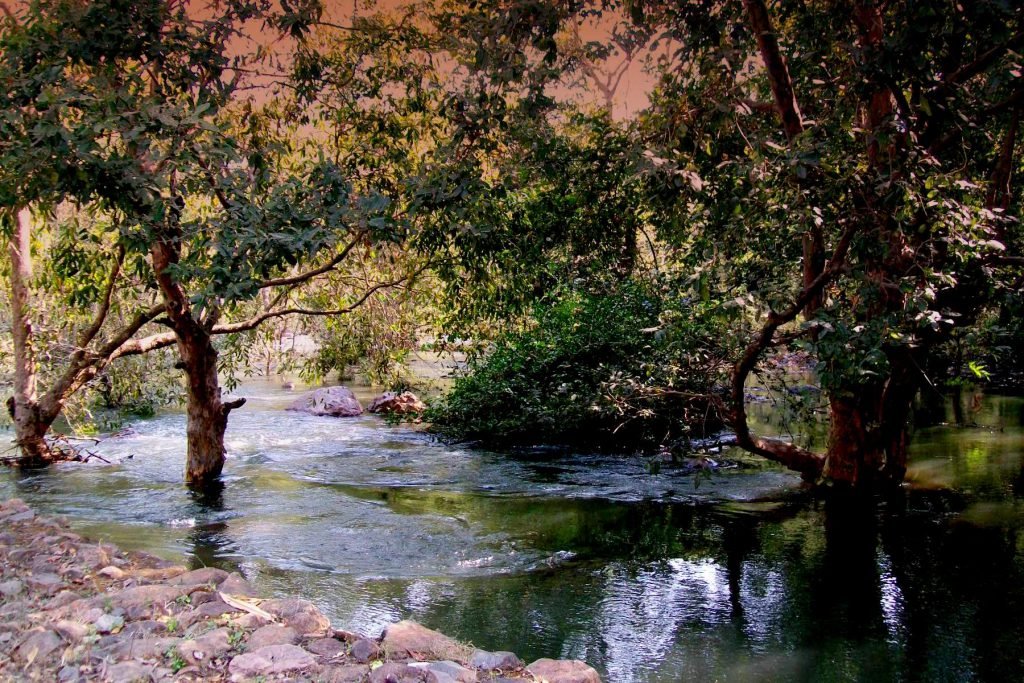
Mount Abu
Mount Abu is a popular hill station in the Aravali Range in Sirohi district of Rajasthan state in western India near the border with Gujarat. The mountain forms a distinct rocky plateau 22 km long by 9 km wide. The highest peak on the mountain is Guru Shikhar at 1,722 m above sea level. It is referred to as ‘an oasis in the desert’ as its heights are home to rivers, lakes, waterfalls and evergreen forests. Nearest Railway station is Abu Road Railway station which is 27 km away.
The ancient name of Mount Abu is Arbudaanchal. In the Puranas, the region has been referred to as Arbudaranya (“forest of Arbhuda”) and ‘Abu’ is a diminutive of this ancient name. It is believed that sage Vashistha retired to the southern spur at Mount Abu following his differences with sage Vishvamitra. There is another mythology according to which a serpent named “Arbuda” saved the life of Nandi – Lord Shiva’s bull. The incident happened on the mountain which is currently known as Mount Abu and so the mountain is named “Arbudaranya” after that incident which gradually became Abu. The Arbuda Mountains (Abu Parvat ‘ Mount Abu) region is said to be original abode of the famous Gurjars. The association of the Gurjars with the mountain is noticed in many inscriptions and epigraphs including Tilakamanjari of Dhanpala.

